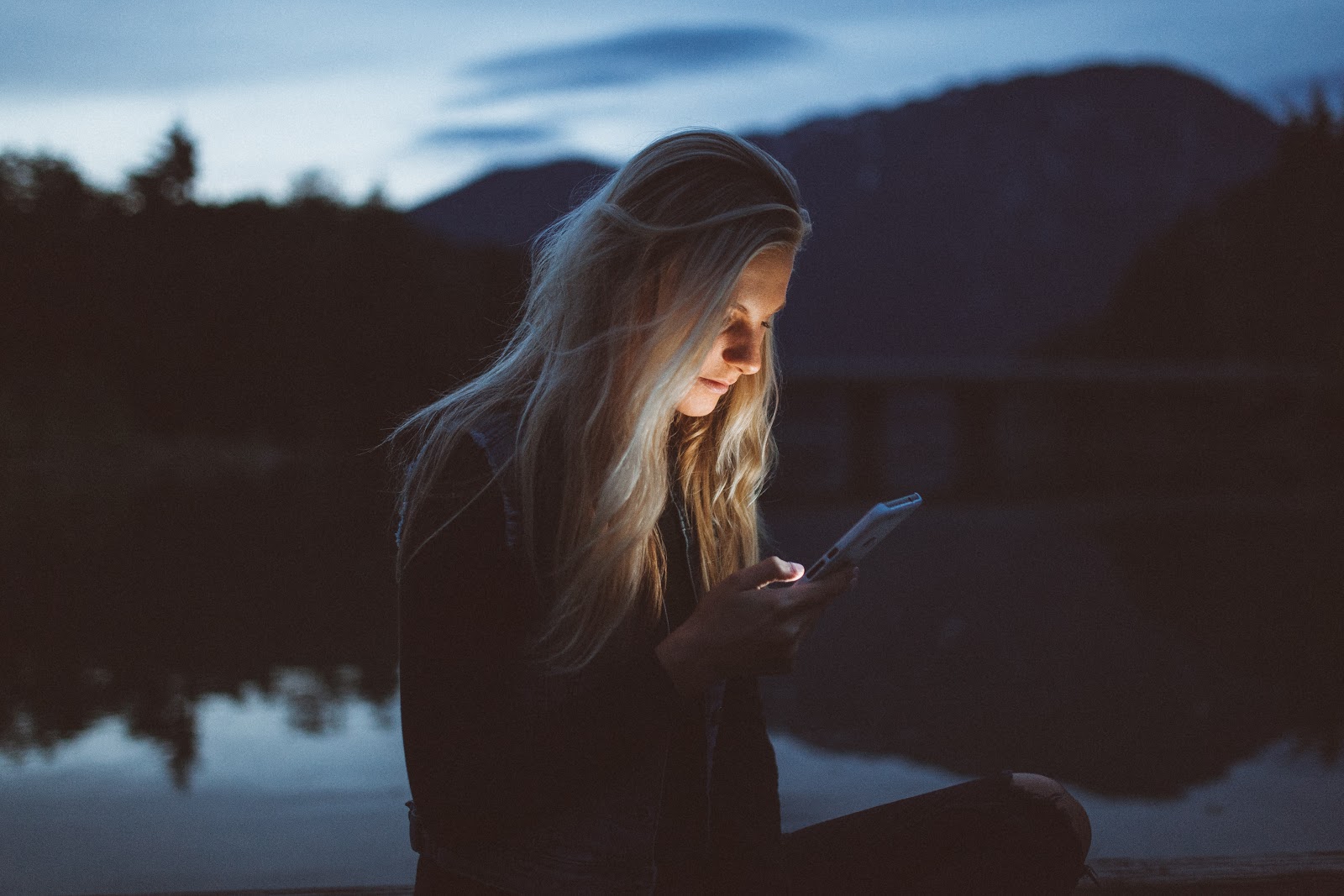Why Can’t I Sleep?!?
I couldn’t help but scream as I frustratingly tossed and turned; I was exhausted, but just couldn’t get the shuteye I so desperately needed. I tried everything: I counted sheep until there were none left on the farm and I even considered drinking warm milk…I hate milk. I was going to need a 24-hour store to go buy some to give this one a shot. UGH! How did I get here?
In the time of COVID-19, we rely on our devices more than ever: to keep us connected, to keep us entertained and, as it turns out, to keep us up at night! The blue light from our phones is affecting us more than we know — and here’s why.
Blue light = the villain
Of all the light rays with which we frequently interact, blue light is the most damaging. Blue light, on the light spectrum, is very close to ultraviolet rays—you know, the rays from the sun which cause sunburn, the ones we try to protect against. Sitting and staring at our electronic devices is the optical equivalent of sun-bathing with no sunblock—highly dangerous! It is so dangerous that excessive exposure can damage the retina in our eyes, the part of the eye that allows us to see, and sends neurological signals to the brain, causing discomfort.
Although I hate to name-call, blue light is a villain who targets more than just the eye. In fact, some argue that blue light is most problematic due to the impact it has on our hormones. Excessive blue light exposure can lead to significant hormone imbalance as it relates to circadian rhythm: hormones affect neurotransmitters. When someone’s environment is light, this signals the excitatory neurotransmitters (i.e. epinephrine and norepinephrine) to be on, alerting us that it is time to wake up. The inverse is also true, in that a dark environment signals the inhibitory neurotransmitters (i.e. serotonin and gamma-aminobutyric acid (GABA)) to be released and the body goes into a calm, restorative state.
Here’s the thing about hormones and neurotransmitters: they work like a see-saw. When one is up, the other must be down. When excitatory neurotransmitters are high and continue to be released (potentially from excessive blue light exposure), our inhibitory ones will not be produced. This upsets our circadian rhythm: our bodies natural sleep/wake cycles. Think about it: if we are staring at the TV or our phones late at night, our eyes are transmitting this “day light” to the rest of our body telling us to be awake. We therefore have a harder time winding down, falling asleep, sleeping long enough and sleeping deeply enough. Lack of sleep and lack of deep restorative sleep cause a cascade of challenges for the body. For many, this can be traced back to excessive blue light exposure and is more common in all of us than we think!
Thank the eyesight gods!
There ARE ways to stop the damage.
How can we fix this? There has to be a cure for all of this damage we are causing, right?
Overall, we want to limit our blue light exposure, making sure to consider the time of day we are on our devices the most. An easy rule of thumb to remember: when it starts to get dark outside, it’s time to shut off our devices! Instead of taking in all this blue light, try an alternate form of entertainment, perhaps reading a good book, and using lamps instead of bright, overhead lighting. This will help us to relax and wind-down.
Beyond spending time away from our phones, laptops, TV’s, and all electronic devices, because sometimes in this coronapocalypse turning off devices is like asking us to climb Mount Everest…during an avalanche, we can use blue light glasses. These can help block blue light rays (like sunscreen for our eyes!) Some phones and computers also have settings that allow the reduction of blue light rays. We can also bring in extra back-up, focusing on antioxidants to help protect the eye, especially the retina, from the oxidative stress of blue light, essentially staring at the proverbial sun all day (and night).
If we are going to have blue light exposure, it makes sense to have it during daylight hours. Sometimes, like going outside and getting fresh air, seeing the bright light of day helps wake us up, signaling to the body that it’s day and time to get moving. The blue light can have this same impact. It makes me wonder if someone impacted by Seasonal Affect Disorder (SAD) could potentially experience some benefit to blue light exposure, similar to other light therapy?
The light at the end of the tunnel
As with everything in life, moderation wins. We may not see harmful outcomes if we use our phones, laptops, TV’s and all electronic devices at appropriate times of the day and learn to wind-down at night with a book, a magazine or, dare I say, even a meditation or journaling. It really is the excessive exposure inherent in our lifestyles today that causes us to say blue light is “bad.” Going forward, remember to be mindful of your screen time and notice how it is making you feel. Trust me; it’s worth it!


